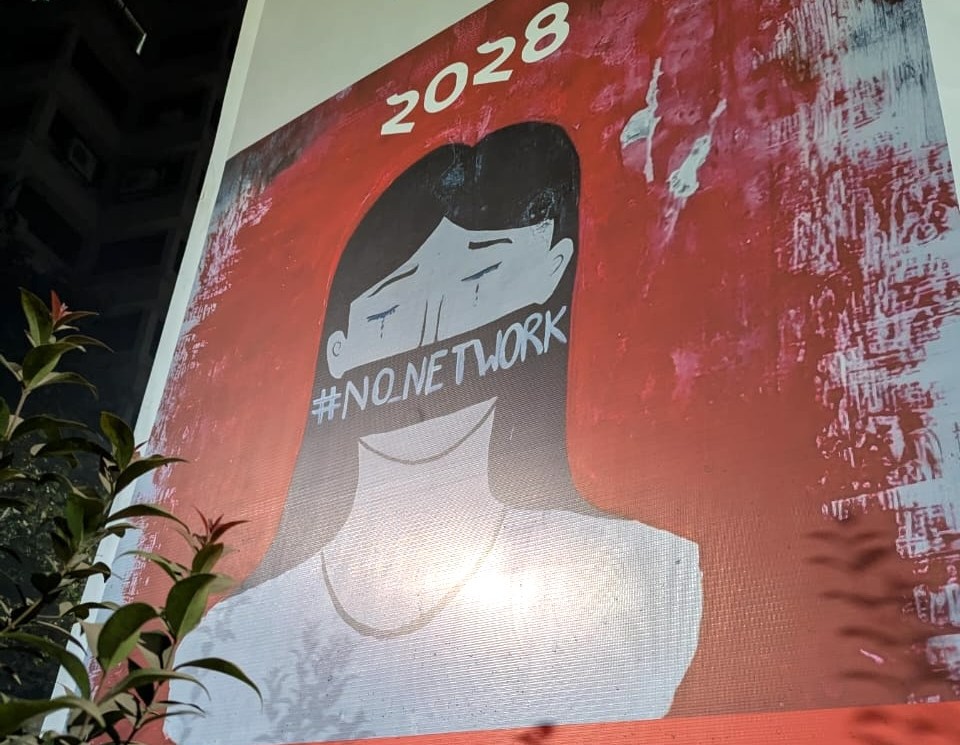In the early hours of July 18, 2024, darkness fell over the dormitories of Jahangirnagar University—not the usual kind, but one laced with fear. The electricity had been cut. Outside the campus gates, armored vehicles rumbled quietly. Law enforcers stood like shadows, their presence suffocating. Inside, students whispered rumors by candlelight. The Wi-Fi was dead. The 4G network had been down for two days. The air was thick—not just with heat, but with dread.
Dhaka University, Rajshahi University, and other campuses across the country felt the same tremor of unease. The world outside was growing quieter, but not because things were calm—because they were being silenced.
That morning, the government flicked a final switch. With one sweeping directive from the National Telecommunication Monitoring Centre (NTMC), Bangladesh’s entire internet infrastructure was shut down. All 4G services were suspended. The country was unplugged—cut off from the rest of the world, and from each other.
Mobile data went dark. Social media feeds stopped loading. News updates disappeared mid-scroll. All that was left were phone calls, if they could get through, and human voices—raw, scared, angry—rising up in the streets.
For many, the internet is lifeblood. It’s how people stay informed, how they connect, how they cry out. On July 18, 2024, that lifeline was severed. No livestreams from the protest frontlines. No calls for help through messaging apps. Just confusion—and chaos.
Parents couldn’t reach their children. Students couldn’t coordinate or warn each other. Journalists, cut off from their digital tools, watched as reality unraveled in front of them with no way to report it.
From Mirpur to Jatrabari, from Science Lab to Dhanmondi, thousands poured into the streets. What began as a movement for quota reform had become something larger—a collective cry against injustice, silence, and fear. And the government responded with force.
Tear gas filled the air. Rubber bullets. Baton charges. Armored vehicles rolled through city streets. The BTV building in Rampura was set ablaze after clashes escalated between police and private university students. In Badda, motorcycles burned. At BRAC University, students were reportedly beaten. As East West University students joined the protests, Rampura Bridge became a battleground.
A man named Dulal Matbor was simply trying to get home. A bullet—possibly stray—cut his life short as he crossed the chaos. At least 100 others, many of them young, were injured. Farazy Hospital in Banasree struggled to keep up with the wounded—its corridors packed, its doctors overwhelmed.
By nightfall, at least 23 people had died. Eighteen of them were in Dhaka alone. Each of them a story, a future that will never unfold.
Among them was Hasan Mehedi, 28, a staff reporter with Dhaka Times, who had gone out to document the unrest—his last report never finished.
And Mir Mahfuzur Rahman Mugdho, 25—a twin, a storyteller, a dreamer—was shot while handing out water to tear-gassed protesters. Just moments before, his twin brother Snigdho had filmed him calling out, “Water, water, anybody needs water, brother?” His quiet compassion was met with a bullet to the head.
Mugdho’s death reverberated far beyond Azampur. He became a symbol—of resistance, of kindness, of what was lost that day.
The border guards were deployed. 229 platoons spread across the nation. Dhaka was cut off from Chattogram. Highways were blocked. Travel was halted. And yet, even in the shutdown, the message was clear: the people would not be silenced.
International concern grew louder. The European Union envoy warned of the country’s volatility. The US Embassy advised caution. Indian visa centers closed. But inside the country, fear grew hand-in-hand with defiance.
Former Law Minister Anisul Huq said the government was ready to talk. But the damage was done. Lives were lost. Trust was shattered.
July 18, 2024, will be remembered not just for the internet blackout or the bodies on the streets—but for what it revealed. A generation of students, armed with nothing but their voices and dreams, faced a state that tried to mute them. And the world watched as a digital curtain fell over a nation in crisis.
But behind that curtain, in the silence, voices rose. In Rampura, Uttara, Badda, and beyond. In classrooms, dormitories, and family homes. The revolution was not televised—but it was lived.
And it is still being written.


